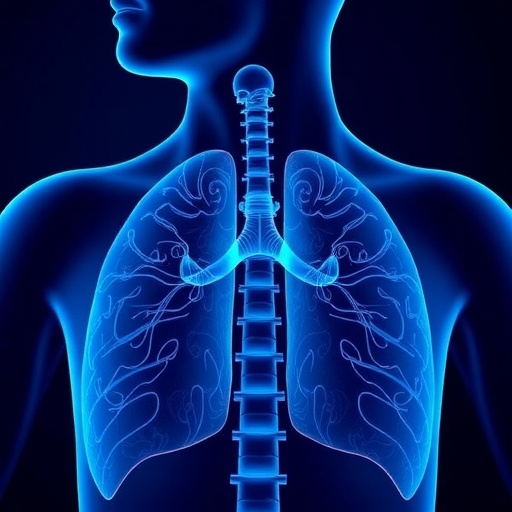Inhaled therapies have long been a cornerstone in managing asthma, particularly in patients with uncontrolled asthma. This therapeutic approach aims to directly target the airways, delivering potent medications with minimal systemic side effects. A recent narrative review by Tcherner et al. sheds light on this crucial area of study, highlighting how inhaled therapy can significantly improve airway dysfunction among asthmatic patients. The review presents an in-depth analysis of various inhaled treatments and their efficacy, as well as illustrating the physiological changes in the airways post-therapy.
Asthma is an increasingly common chronic respiratory condition that affects millions worldwide. It is characterized by airway inflammation and hyper-responsiveness, leading to recurrent episodes of wheezing, shortness of breath, chest tightness, and coughing. For many patients, traditional methods of management remain inadequate. This is where inhaled therapies enter the picture, providing a more direct and often more effective means of controlling symptoms and improving quality of life.
The review systematically explores the mechanism of action of inhaled therapies, particularly focusing on corticosteroids and bronchodilators. Corticosteroids work by reducing inflammation in the airways, which is a critical component of asthma pathology. This reduction in inflammation leads to decreased airway hyper-responsiveness, which can significantly enhance airflow and alleviate symptoms. Meanwhile, bronchodilators act to relax the muscles surrounding the airways, providing immediate relief from the acute symptoms associated with asthma attacks.
One of the key advancements in inhaled therapy is the development of novel inhalation devices that optimize drug delivery. These devices are designed to enhance the deposition of medication directly in the lungs, ensuring that patients receive the maximal therapeutic benefit. Studies referenced in the review highlight that proper inhaler technique is crucial for effective therapy. Inadequate inhalation techniques can severely compromise drug delivery, underscoring the need for continuous patient education and training.
The review also tackles the importance of personalized medicine in asthma management. Identifying the specific type of asthma a patient has—whether it’s allergic, non-allergic, or exercise-induced—can drastically change the treatment landscape. By understanding the underlying triggers and pathology, healthcare providers can tailor inhaled therapies that are more effective for individual patients, leading to improved outcomes.
Importantly, the narrative review includes a detailed examination of patient responses to inhaled therapy through various visualizing techniques. These innovative methods reveal not just symptom relief but also observable changes in airway size and inflammation levels. Technologies such as imaging and biomarker analysis are crucial in evaluating treatment success, offering a tangible measure of how inhalation therapies restore normal function to constricted airways.
However, the narrative also brings to light the barriers faced by patients in accessing inhaled therapies. Despite their efficacy, not all patients have equal access to these treatments due to socioeconomic factors, healthcare disparities, and patient education. The authors advocate for systemic changes that prioritize equitable access to asthma care, emphasizing that these therapies should be available to all segments of the population, not just those with favorable circumstances.
Another fascinating aspect discussed in the review is the role of adherence to prescribed inhaled therapies. Non-adherence remains a significant challenge in asthma management. The article reviews recent studies exploring the reasons behind medication non-adherence, ranging from forgetfulness to complex dosing schedules. Addressing these barriers is critical for improving overall health outcomes, as demonstrated by patients who have successfully integrated their inhaled therapy into their daily routines.
Moreover, the psychological dimension of asthma management is brought to the forefront. The emotional burden of living with uncontrolled asthma can weigh heavily on patients. The review highlights the importance of integrating mental health support with physical health treatments, advocating for a holistic approach to asthma management that recognizes the interplay between the two.
In closing, Tcherner et al. provide an imperative call to action for clinicians and researchers alike. The importance of ongoing research in this field can not be understated, as it will pave the way for more effective and innovative inhalation therapies tailored to the evolving landscape of asthma management. By continuing to explore the intricacies of airway dysfunction and the myriad factors that influence treatment efficacy, the medical community can enhance the quality of life for all patients suffering from this chronic condition.
The hope is that through further advancements and a collaborative approach to asthma care, patients will have access to the best possible therapies that lead to significant improvements in their daily lives. This narrative review acts as a pivotal contribution, underpinning the need for comprehensive strategies in the realm of inhaled therapies.
Ultimately, the call for further innovations in inhaled therapies, coupled with a deeper understanding of patient needs and systemic barriers, stands to revolutionize asthma care in the coming years. The pathway to effectively visualizing improvements in airway dysfunction after employing inhaled therapies signifies a monumental step toward better, more personalized asthma treatment strategies.
Subject of Research: Inhaled therapy and airway dysfunction in asthma management.
Article Title: Visualizing Improvements in Airway Dysfunction After Inhaled Therapy in Patients With Uncontrolled Asthma: A Narrative Review.
Article References:
Tcherner, S., Mozaffaripour, A., Yamashita, C. et al. Visualizing Improvements in Airway Dysfunction After Inhaled Therapy in Patients With Uncontrolled Asthma: A Narrative Review.
Adv Ther (2025). https://doi.org/10.1007/s12325-025-03392-4
Image Credits: AI Generated
DOI: 10.1007/s12325-025-03392-4
Keywords: asthma management, inhaled therapy, airway dysfunction, personalized medicine, patient adherence.




